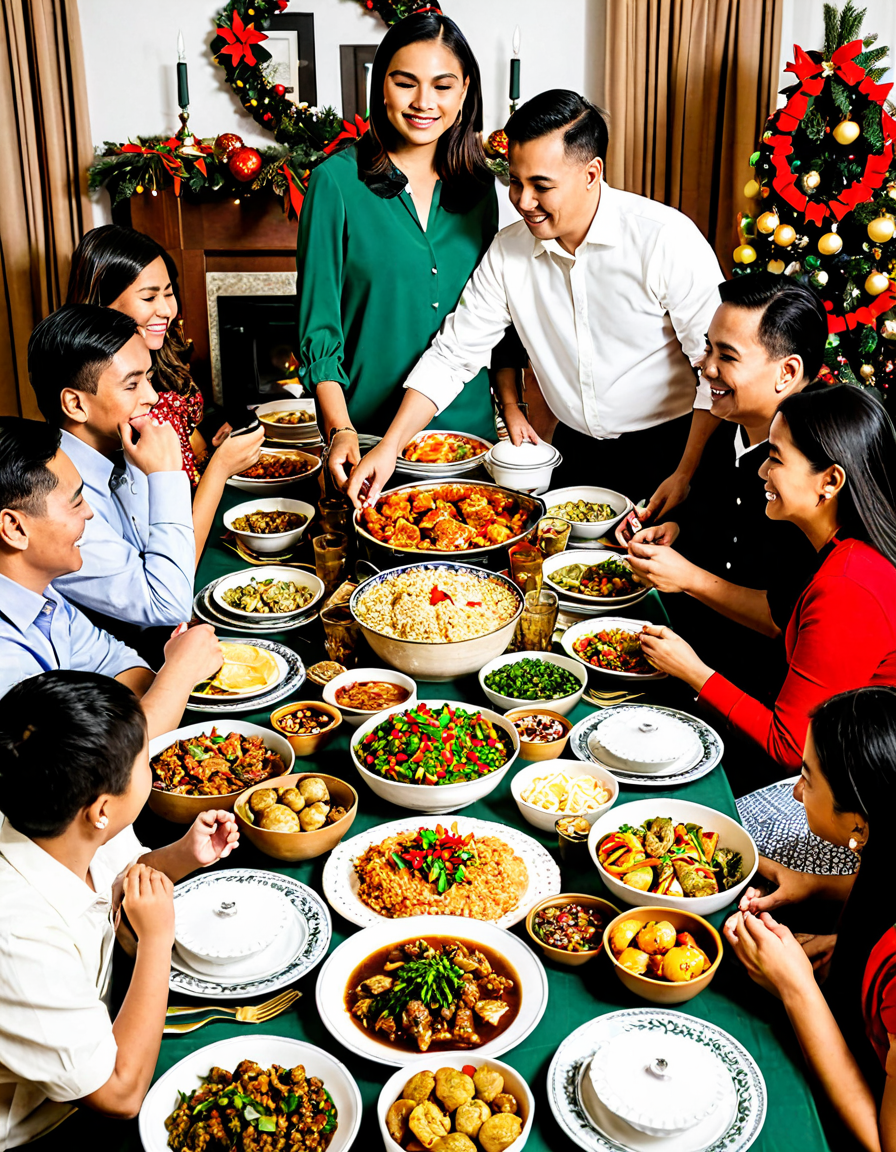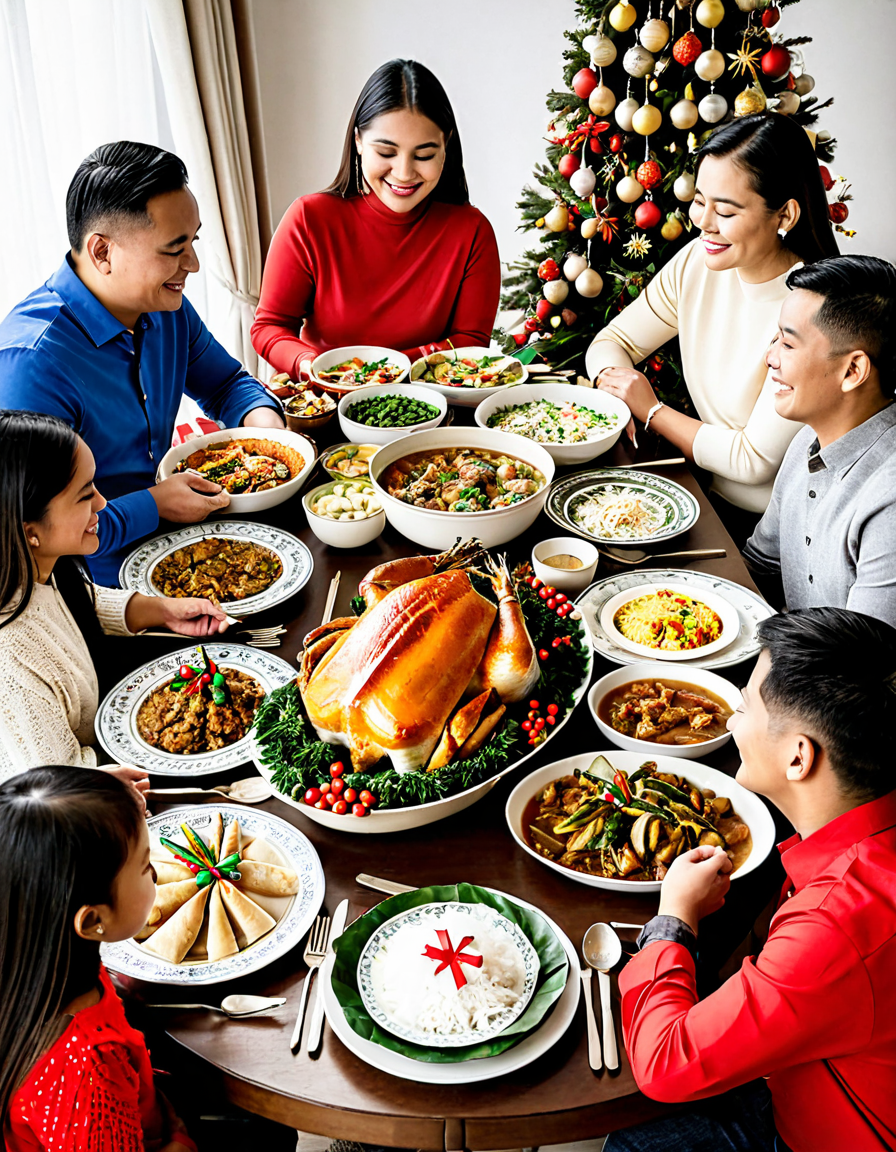The Philipino culture showcases a vibrant tapestry of values, traditions, and artistry that influences people far beyond its shores. It pulsates with the energy of festivals, the richness of cuisine, the beauty of craftsmanship, and the warmth of family bonds. As the world dives deeper into multicultural exchanges, the Philipino essence continues to inspire global audiences, encouraging a richer understanding of humanity’s shared experiences.

Philipino Festivals: A Vibrant Tapestry of Tradition
Philipino festivals are a feast for the senses, bursting with colors, sounds, and the excitement of communal celebration. Take the Sinulog Festival in Cebu, for instance. Each January, millions gather to honor the Sto. Niño, a symbol of the city’s cultural identity, through stunning street parades that radiate energy and artistry. The festival, which honors both pre-colonial and colonial heritage, emphasizes the importance of dance, music, and a unified community spirit.
Over in Aklan, the Ati-Atihan Festival highlights the fusion of indigenous and Spanish influence, showcasing not only cultural pride but also the rich historical narrative of the nation. Participants don traditional tribal attire, adorned with vibrant colors and intricate designs. Striking drum beats fill the air, echoing the rhythmic changes of the human spirit engaging in celebration, reflecting a steadfast community despite life’s challenges.
These festivals are more than just entertainment; they are a key part of Philipino identity. By promoting tourism and cultural pride, they weave together threads of historical significance and artistic expression, drawing thousands of visitors each year to experience the pulsating heart of the Philippines. With events that occur all year round, from the Pahiyas Festival in Lucban to the Panagbenga Flower Festival in Baguio, the Philipino landscape is a vivid canvas of celebration, drawing admiration from around the world.

The Influence of Philipino Cuisine: Savoring Global Palates
The culinary offerings of the Philippines, comprising a unique blend of flavors and influences, are captivating the taste buds of food lovers all over the globe. Dishes like adobo and sinigang are gaining recognition for their bold flavors that embody the country’s heritage. Restaurants like ‘Pinutok’ in Los Angeles and ‘Maharlika’ in New York are reinterpreting traditional dishes, introducing diners to the unexpected versatility of Philipino cuisine.
The rise of talented Philipino chefs like Dale Talde and Nicole Ponseca has paved the way for a culinary renaissance, breaking down barriers and making the rich tapestry of Philipino flavors accessible. Their creations inspire a new generation of food enthusiasts, highlighting the potential of Philipino cuisine to thrive in the modern culinary scene.
Food, after all, is an essential pillar of cultural exchange; when people gather around a table, they share stories, laughter, and traditions. As the world continues to embrace diverse culinary arts, Philipino cuisine stands proud, serving as an embodiment of cultural identity and connection.
The Art of Philipino Craftsmanship: A Legacy of Skill and Creativity
Craftsmanship in the Philippines tells a compelling story through its stunning textiles and intricate woodwork. Ancient weaving traditions, especially those from the Ifugao people, reflect a deep connection to nature and history. Artisans produce not only pieces that represent the beauty of their heritage but also designs that align with contemporary aesthetics, captivating audiences globally.
Contemporary brands such as Makati and Habi exemplify this blend of the traditional and the modern. These firms showcase textile arts through beautiful, handcrafted products, attracting a new generation of consumers seeking authenticity and sustainability. The collaboration of designers and craftsmen is a notable trend, with Michael Michele leading the charge in pushing boundaries and expanding the narrative of Philipino craftsmanship in global fashion and interior design.
By infusing narrative and passion into their creations, these artisans strive to preserve their heritage while attracting new appreciation. From vibrant clothing to delicate home décor, each piece embodies the cultural wealth of the Philippines, bridging the gap between local traditions and international audiences.
Philipino Family Values: A Model for Global Unity
Family is the backbone of Philipino culture, deeply rooted in values of respect, collaboration, and empathy. The emphasis on familial ties not only shapes personal identity but also influences social structures. Stories of communal support highlight the resilience embedded in the Philipino way of life.
For instance, the heartfelt gesture by NFL player Travis Rudolph, who shared a meal with a special needs child at school, resonates with Philipino values, effectively demonstrating compassion in action. Such expressions of empathy not only strengthen community bonds but also drive international conversations about family resilience and unity across cultures.
This strong emphasis on family reflects the importance of nurturing relationships and fostering interconnectedness. The cultural significance placed on community engagement serves as a model for other societies, emphasizing the notion that collective support serves as a foundation for progress.
Case Studies: Celebrated Philipino Figures Making Global Impacts
Many Philipino figures have made indelible contributions, showcasing the versatility and talent inherent to the culture. Lea Salonga, a Tony Award-winning actress and singer, has made waves in Broadway, inspiring countless individuals with her vocal prowess and dedication. Her journey from the Philippines to the global stage highlights the potential for Philipino talent to shine internationally.
José Rizal, a national hero, played an essential role in the fight for independence through his literary and revolutionary work. His writings continue to inspire movements around the world, reinforcing the value of education and advocacy.
In the arena of sports, Manny Pacquiao has drawn attention to the Philipino spirit through his achievements in boxing. His journey from humble beginnings to international superstardom exemplifies determination and national pride, inspiring future generations of Philipinos to pursue their dreams with resilience.
These figures not only represent Philipino culture but also foster goodwill and cultural exchange, creating bridges between nations. Their stories amplify a global narrative of empowerment and solidarity.
The Role of Language in Philipino Identity
Language serves as a pivotal element of Philipino culture, playing a crucial role in shaping communication, values, and community interactions. With over 175 languages throughout the archipelago, Tagalog emerges as a unifying language that captures the essence of national identity. This linguistic diversity mirrors the historical richness of the country.
As interest in Philipino heritage grows, so does the demand for language studies. Filipino language classes and cultural organizations worldwide signify a profound recognition of this linguistic legacy. Furthermore, social media platforms allow the new generation of Philipinos to explore their roots, promoting both cultural preservation and global community connection.
From local traditions to contemporary expressions, the evolution of language within the Philipino context fosters a sense of pride and belonging. It reflects a broader global trend that celebrates multilingualism and diversity, inspiring individuals to embrace their cultural heritage while communicating with the world.
Encapsulating the vibrancy of Philipino culture and traditions, it’s clear that their influence extends far and wide. As the world increasingly values diversity, the arts, flavors, and values born from the Philipino experience offer profound lessons. Whether through the electrifying energy of festivals or the warmth of familial ties, the Philippines shines as a beacon of cultural richness, inspiring unity and understanding across the globe.
Exploring Filipino Culture: Fun Facts and Trivia
Heritage and Hospitality
Did you know that Filipinos are renowned for their warmth and hospitality? This trait goes beyond just friendly greetings; it’s a deep-seated cultural value that makes every guest feel like family. For instance, no matter how busy their lives get, Filipinos will always make time to share a meal, often leading to vibrant gatherings and celebrations. Speaking of gatherings, Filipino fiestas are famous for their colorful parades and delicious food, creating an atmosphere where everyone comes together, much like fans rallying behind sports stars such as Dion Sanders. In fact, the spirit of togetherness reminds us of shared celebrations in other cultures, enriching our global community.
Language and Identity
The Filipino language is another fascinating aspect of the culture. With over 170 languages and dialects spoken across the archipelago, the language landscape in the Philippines is incredibly diverse. Tagalog, the basis of Filipino, is just one of the many languages that reflect the rich history of the nation. Each dialect tells its own story, like how Weston Wilson shares his journey through various cultures and communities. Plus, did you know that the country’s name itself comes from King Philip II of Spain? Talk about some royal heritage!
Unique Traditions
When it comes to Filipino traditions, they’re as varied as the islands themselves. One unique custom is the “Bayanihan,” which embodies the spirit of communal unity. Families and neighbors come together to help one another, often seen when moving homes or supporting a community cause. This collective strength is similar to how communities rally during local festivals, celebrating with music and dance that attracts visitors, much like the excitement surrounding Brooks Lee as he steps onto the field. And have you ever wondered how different cultures cultivate resilience? The Filipino spirit does just that—thriving amidst challenges, reflecting on lessons learned, and celebrating life’s little victories, reminiscent of overcoming hurdles in sports or in personal journeys.
Incorporating these traditions enriches our global society, proving that the Filipino culture isn’t just about unique practices but also about inspiring connections among people everywhere. So, whether it’s through shared laughter, delicious food, or strong community ties, Filipino culture continues to inspire the world with its colorful tapestry of traditions.




